Wall decoration options in the hallway
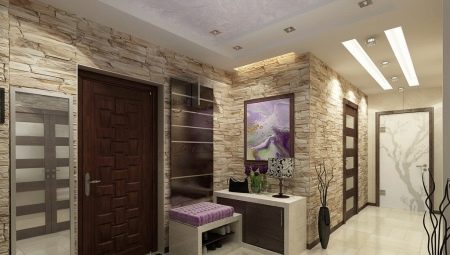
The entrance hall is the place where all the tenants of an apartment or house and their guests first go. Accordingly, most of all pollution occurs in such a room. This happens most often if there are animals in the house. That's why before you start making repairs in the hallway, you definitely need to think about the material with which the walls will be decorated, so as not to worry about their cleanliness.

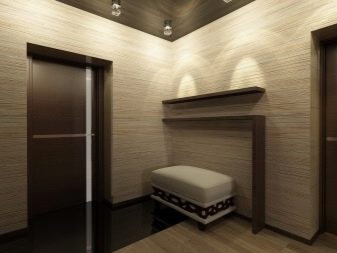
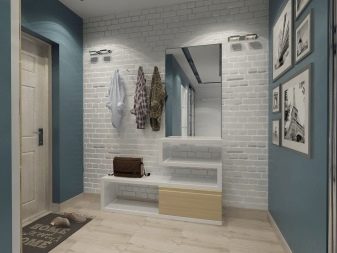
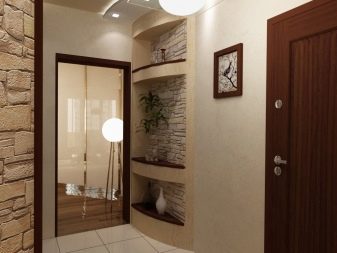
Design features
When planning the interior in the hallway, first of all, you should take care of the wall decoration. After all, this is the base from which they start when further planning how the room will look. It is very important that the design in the corridor is more or less neutral, and it is easy to add any details to it. Moreover, do not forget about the direct purpose of the hallway - it should be functional and comfortable.
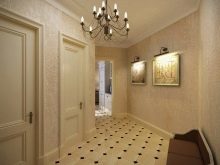
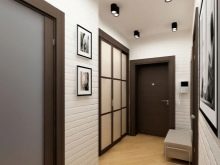
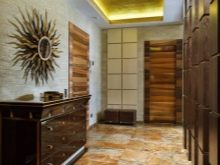
So that repairs in the apartment do not have to be done again, the material must have the following qualities:
- have high wear resistance;
- be durable;
- it could be easily and quickly washed or cleaned using only special detergents or detergents;
- be maintainable;
- have high security.

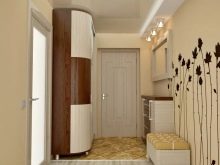
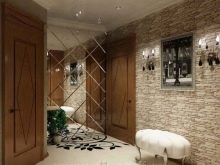
Besides, when decorating a hallway, you should definitely heed the advice of experienced specialists. For example, walls of small rooms are best finished in light or pastel colors. This will visually expand the space. In addition, paintings or family photos can be hung in front of the door.
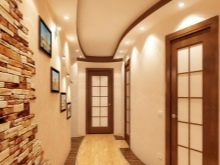

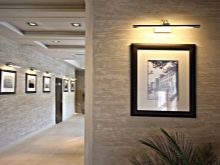
Varieties of materials
When choosing finishing materials, attention should be paid to both how they look and their quality.There are many finishes available.
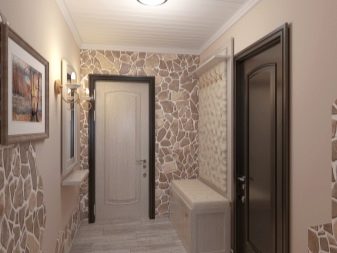
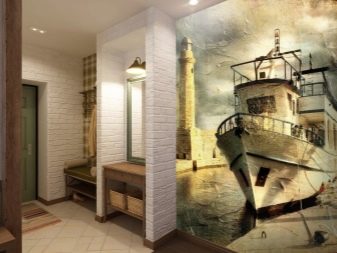
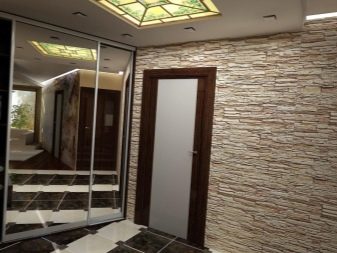
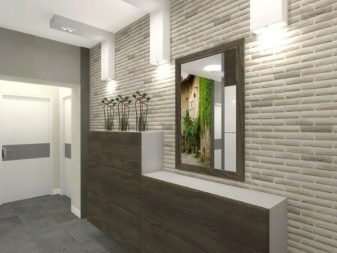
Dye
This material is considered one of the most budgetary and simplest ways to decorate walls. But for everything to look neat, the walls in the hallway must be made perfectly. If there are any disadvantages of the coating, then the walls must be leveled. You can do this, using putty: starting or finishing... After that, you can start painting.
Maintenance of such walls will be very easy, because any dirt can be washed off with a regular sponge and detergent. In addition, the color range of this material is quite diverse. This allows you to choose any shade you like, or even combine several colors in one room without any problems. In this case, you can also create on the wall original drawing or ornament.
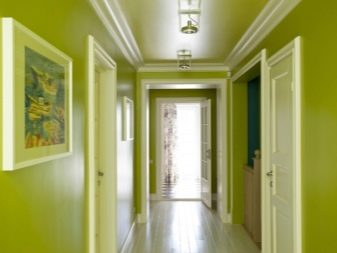
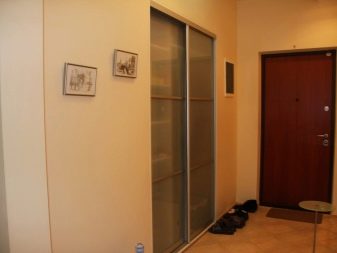


Such material easily falls on the surface of the walls. It is worth considering in more detail the pros and cons of different paints.
- Latex paints quite resistant to the negative effects of temperature changes. They wash well, are not afraid of steam. But at the same time, they are very difficult to remove from the walls.
- Water-based paint odorless, adheres easily to walls and dries very quickly. In addition, such paint is not too expensive. But after it dries, it may well be washed off with water.
- Acrylic paint characterized by high efficiency and safety. In addition, it is UV resistant. The disadvantages include the difficulty in choosing shades. If you mix the colors yourself, it can be very difficult to achieve the desired tone.
- Silicone paint is distinguished by its strength and durability. In addition, it is resistant to water. The disadvantages include not the most affordable prices and the fact that you need to buy a lot of material to paint a room.
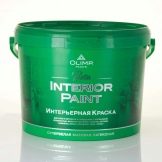
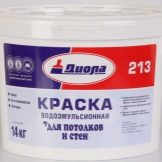
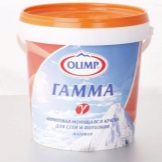
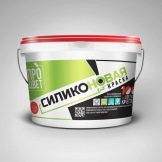
In general, by choosing the simplest wallpaper for yourself, you can make a budget repair and remain completely satisfied with it.
Wallpaper
With the help of this material, you can make the hallway very beautiful. For example, you can paste over one wall in one color, and make the rest contrasting. In addition, you can use both patterned and plain wallpaper. It all depends on the imagination of the owner or the designer who is engaged in the design. However, it is imperative that so that the selected wallpaper is combined with furniture and individual items in the room.
In the modern world, the range of wallpapers is quite diverse. That's why you can choose not only plain paper wallpapers, but also vinyl or non-woven wallpapers... To make the choice easier for yourself, you need to familiarize yourself with their characteristics.


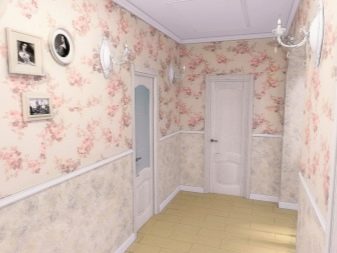
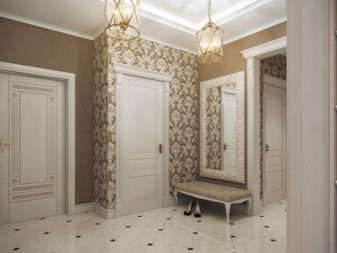
Non-woven
This wallpaper consists of two full layers. It is based on a non-woven cellulose fabric, and on top of it there is a polymer coating. This material is not as strong as we would like it to be, but with its help you can hide any flaws on the wall. Besides, they do not shrink, are easy to work... Most importantly, they environmentally friendly.
They can be used not only for pasting walls, but also for decorating the ceiling. If there is a need for this, you can change the appearance of the room in an instant. To do this, simply paint them in a different color.
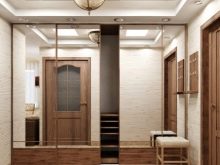
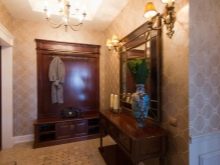
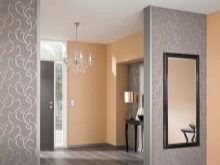
Vinyl
This type of wallpaper also has two layers. The base is made of plain paper or non-woven fabric. The second layer has a decorative coating consisting of polyvinyl chloride. It can be of different thickness. There are also relief surfaces.
These wallpapers are very durable and resistant to sunlight. For this reason, they can retain their color for a long time. Many people call them washable because they can be damp cleaned. The color scheme of such wallpapers is too diverse, which means that they can easily be matched to the interior of the hallway. When choosing, you must definitely pay attention to the price of this material, because cheap wallpapers are toxic and can harm your health.

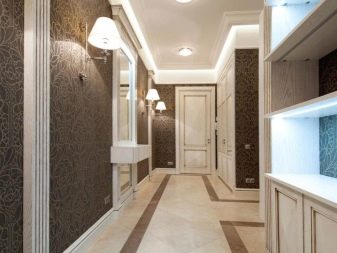
Fiberglass
The basis of such wallpaper consists of glass fiber, which makes them highly durable. After pasting, the wallpaper can be additionally painted with water or latex paint. They have a long service life, up to 30 years. They can be repainted every year.

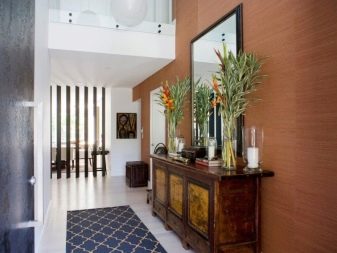
Wallpaper
Such wallpapers are made from completely different materials. It can be either plain paper, or vinyl or non-woven. In some cases, even fabric photomurals are found. It is best to use in the hallway vinyl or non-woven wallpaper, as their characteristics are most suitable for this.
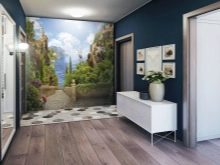
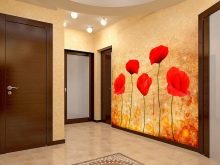
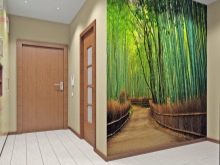
Bamboo and cork
They differ from other materials for pasting walls in their naturalness. In addition, these wallpapers are distinguished by good sound insulation. They possess resistance to mechanical damage. However, there are also some disadvantages of such wallpaper. It won't be so easy to glue them you will need absolutely flat walls, as well as special glue.



Decorative plaster
This material has a good texture, as well as a huge range of colors. In addition, it is durable and environmentally friendly. Decorative plaster can be used in a variety of styles.
Among its varieties, it is worth noting microcement. It can be used on different surfaces like on a concrete wall, ceramic or even metal. Microcement can be used to create both glossy and matt surfaces.
If we talk about the shortcomings of this material, then this is a high price, as well as complexity in application. Therefore, wall decoration should be done by people who already have experience in this matter.
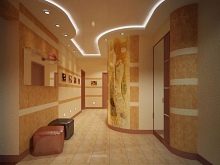
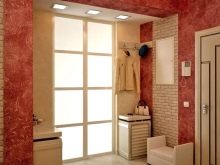

Artificial and natural stone
Very often, natural or artificial stone is used to decorate the corridor, which can be supplemented with good lighting, as well as huge mirrors. As for artificial stone, it is most often made in the form of flexible plates or tiles. Both artificial and natural stones are distinguished by the following qualities:
- durability - this material can serve for several decades;
- safety, because the stones do not burn;
- moisture resistance;
- ease of care.
However, it is also worth noting some disadvantages, which include the high cost of the material.
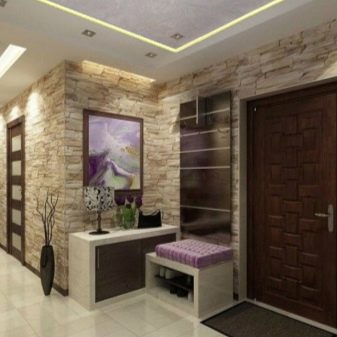
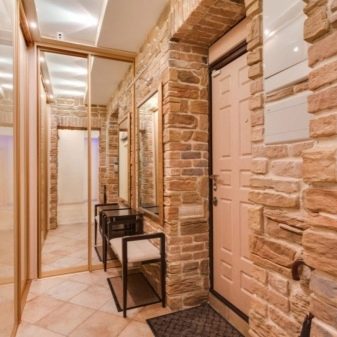
Wall panels
For their manufacture, you can use different materials. For example, you can sheathe the walls with PVC, MDF or 3D panels. As a rule, slats are used for their fastening.
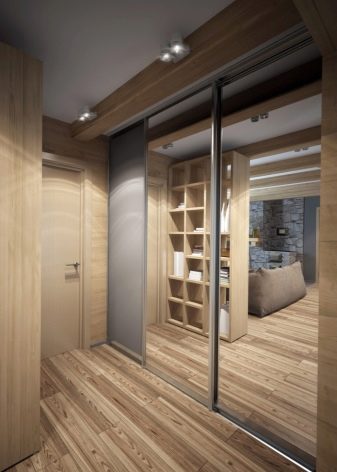
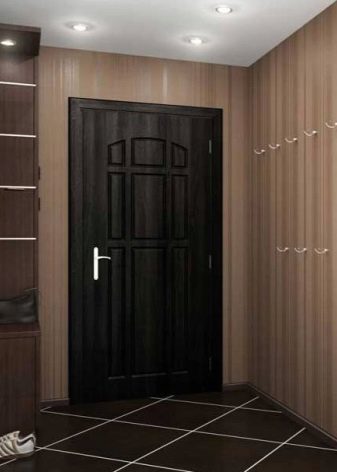
PVC panels
Plastic wall panels can also be safely used in the design of a modern hallway. After all, they differ in a large range of colors, as well as different textures. Among the advantages it is worth noting:
- low price;
- easy care;
- easy installation, because there is no need to align the walls.
The disadvantages include the following:
- instability of the material to various mechanical damage;
- fast burning out in the sun.
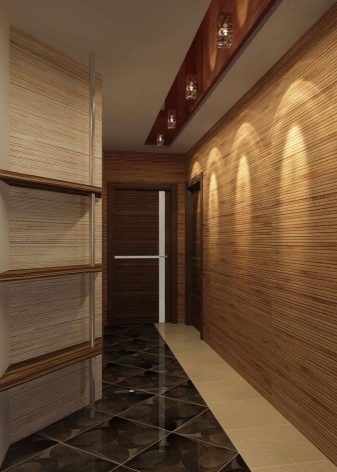
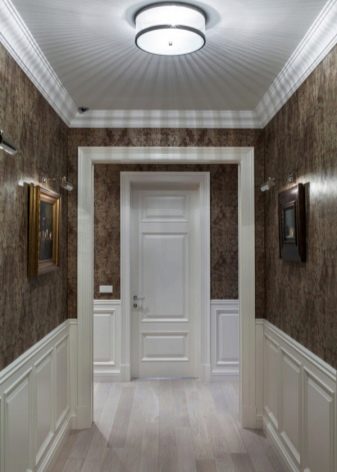
MDF panels
In their manufacture, the plates are first painted, then veneer is applied, and then laminated. They can imitate materials such as leather, stone, and even wood. The pluses include:
- environmental friendliness;
- strength;
- ease of care.
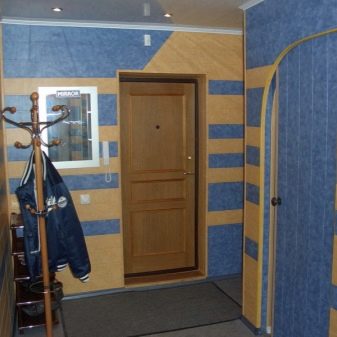
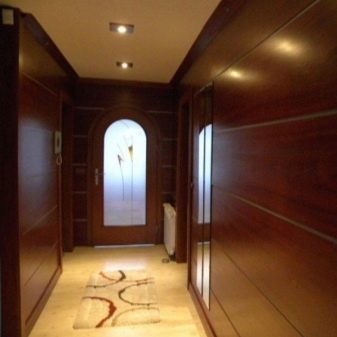
3D Panels
These panels differ in beauty and originality. They can be made from wood, glass, and even drywall. Depending on the material, their price will vary significantly. But almost all of them have common advantages:
- speed of installation work;
- the possibility of carrying out repair work;
- high strength;
- ease of care.
The disadvantages include their high price.
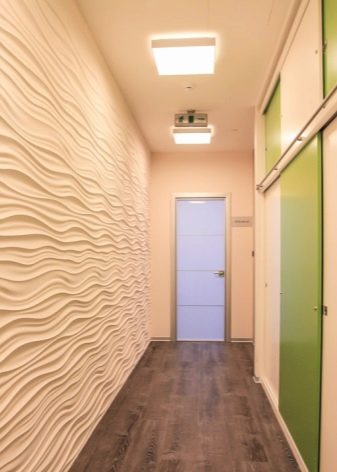
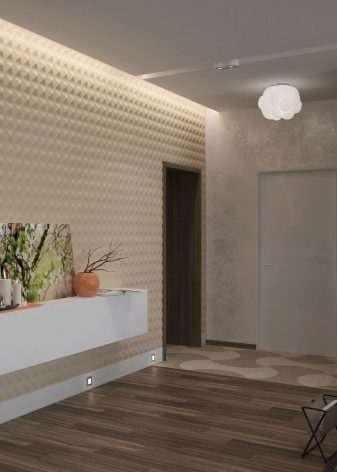
Mirrored
With the help of a mirrored wall, you can immediately transform the entire space in the hallway. The mirrored wall allows not only to visually increase the volume of the room, but also to play with the light. You can create such a wall using small mirror panels, which must be placed in the corners or on a separate wall in the hallway.
They are easy to install and can be combined with any existing finishes. However, they will need regular care, and the cost is very high.
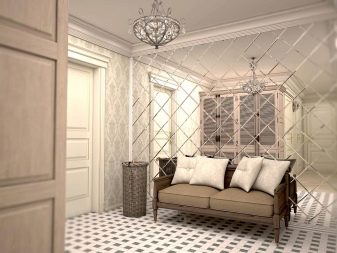
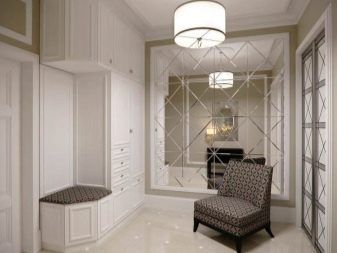
Laminate
On the walls, this material is used both as inserts and as a decoration for the entire wall. Laminate flooring often replaces wood wall panels as it is cheaper. The advantages of this material include:
- beautiful view;
- easy installation work;
- environmental friendliness.
The disadvantage of laminate is considered to be its instability to moisture, from the excess of which it can even deform.
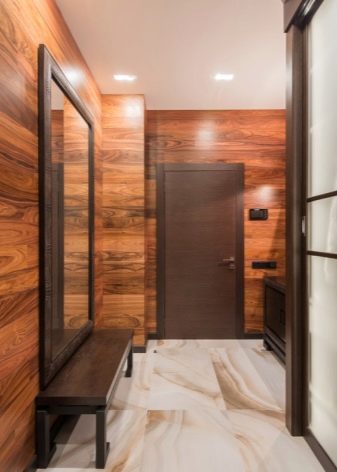
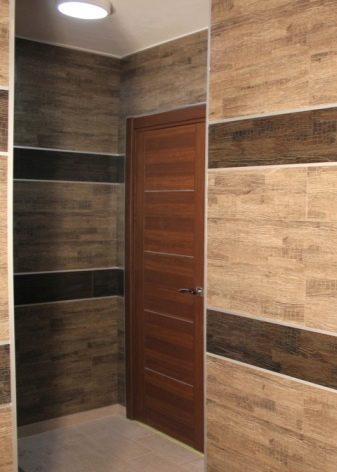
Tile
In the modern world, tiles can be used not only in the bathroom or toilet, but also in the same hallway. The corridor today is often finished with both tiles and porcelain stoneware, in addition, mosaics are often used to decorate the walls in the hallway. It is worth considering all the advantages of different types of tiles:
- the palette of colors is quite large;
- the material is durable;
- not afraid of moisture;
- can be combined with paint, wallpaper, and panels;
- easy to clean.
The disadvantages include the fact that the installation work is rather complicated.
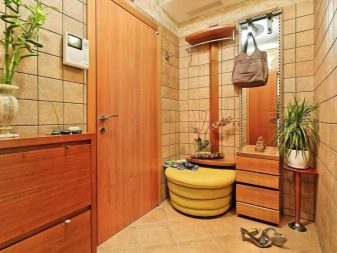
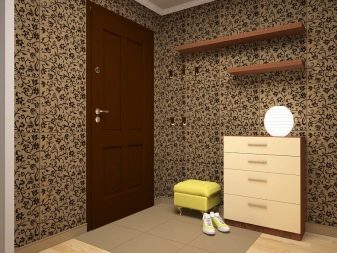
Frescoes
Frescoes have become a real breakthrough in the design of modern rooms. Of course, they were used earlier in the design of temples, palaces and other similar premises. Such luxury was not available to ordinary people. Later, architectural painting began to be used in the process of decorating houses and apartments.
Regardless of the style in which the room is decorated, the fresco will perfectly complement it. The advantages of this material include its high quality, as well as durability. Well, the fact that the frescoes look original, stylish and incredibly beautiful.
The disadvantages include their high price, as well as heavy installation work... After all, the master must have a prepared canvas on which he can apply the base. And only then the fresco itself is made. At the end, it needs to be varnished.
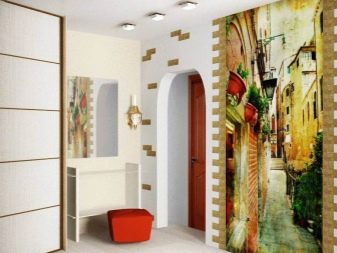

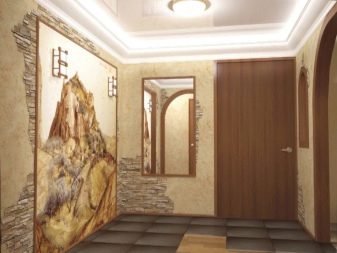
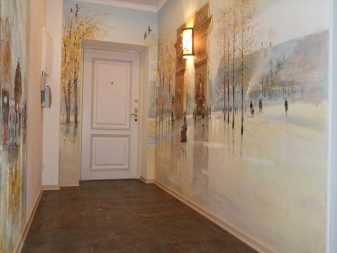
Combination options
To create an interior in the hallway, you can use a combination of different materials. For example, for a small hallway with niches and columns, paint is the most suitable material. It is best to use light colors. On the walls you can hang family photos in beautiful bright frames. In addition, all protrusions can be accentuated with wall or spotlights.
When the wall is finished with plaster, the bottom of the walls and the corners of the hallway can be decorated with a material that imitates brickwork. In this case, the bottom of the wall can also be finished with decorative panels colored to match the furniture.

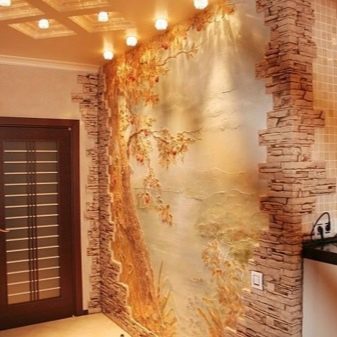
To visually make the hallway higher, it is best to choose a striped wallpaper. The lower part can be decorated with tiles or the same imitation of brickwork. In the process of decorating spacious rooms, you can combine wallpaper and wood panels. In addition, decorative plaster will be perfectly combined with artificial stone.
In suburban areas, where the hallways are quite light and have many windows, you can use frescoes to decorate the walls or even make small niches with statues placed in them.
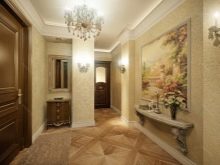

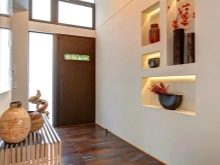
What is the best choice?
This question is always raised when choosing a material for the repair of any room, including the hallway. It is necessary to take into account its price, and exclusivity, and simplicity of installation work. So, if you cover the walls with paint, then this will not only save money on repairs, but also greatly facilitate your care.
If you make your choice in favor of durable artificial stone or frescoes, then the interior of the hallway will be more unusual.... In addition, you can use painting in the process of wall decoration and arrange in the appropriate style.
If you finish the walls with laminate or MDF panels, you can save money on repairs. Any of the selected materials has its own advantages and disadvantages.Before translating your ideas into reality, you need to take into account your financial capabilities, and the humidity in the room, the main thing is your preferences. In addition, you can combine several materials at once; for example, make the bottom out of one, and the top out of the other.
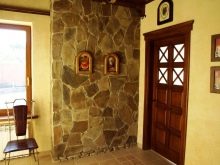
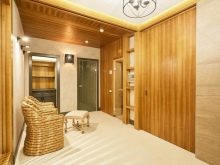

There are a number of important factors to consider when choosing a material.
- Hallway dimensions.
- The shape of the walls.
- The interior of the whole house or apartment.
- The presence of pets or children. In this case, the bottom of the walls must be finished with a more durable material.
- The presence of niches or arches in the room, because they significantly complicate the finishing work. In addition, in such cases, it is necessary to focus on the correct placement of additional items. If you do everything correctly, then even an empty niche can become the highlight of the whole room.
- Colors. Indeed, with the right choice of shade, you can not only visually increase the space, but also hide all the flaws.
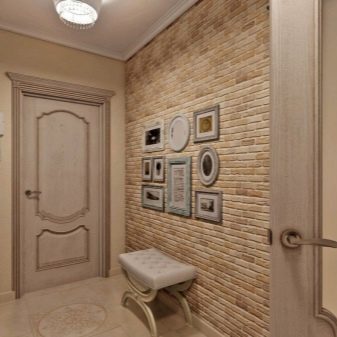

Successful examples
To make the choice a little easier for yourself, you can consider the most interesting examples of hallway decoration.
With photo wallpaper
They can be a highlight in such a room. They should be placed in a room with light walls. It is enough to combine a light brick wall with white accents, and the wallpaper will perfectly fit into the style of such a room. Additional details, such as paintings or photographs, should also suit the style of the room.
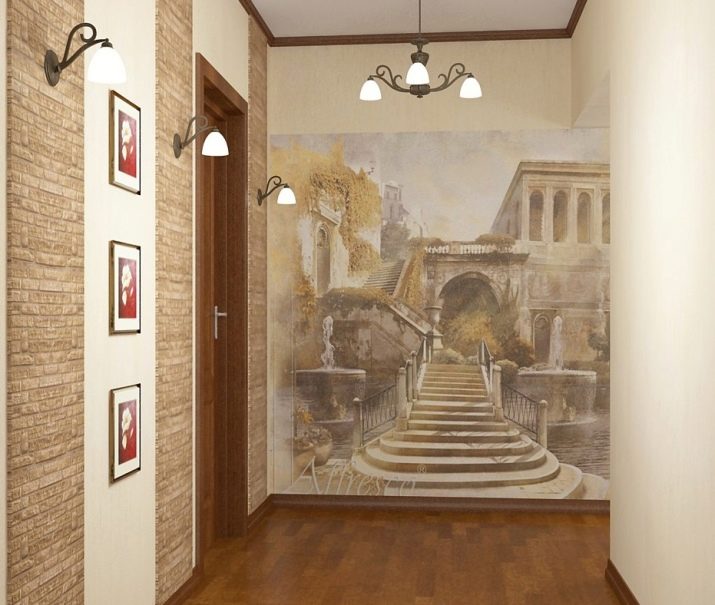
With plastic panels
Beige PVC panels will look quite beautiful and stylish in the hallway. They will make the room visually larger. In addition, one of the walls can be decorated with a pattern that immediately attracts all the attention. This is very important for those rooms where the walls are uneven.
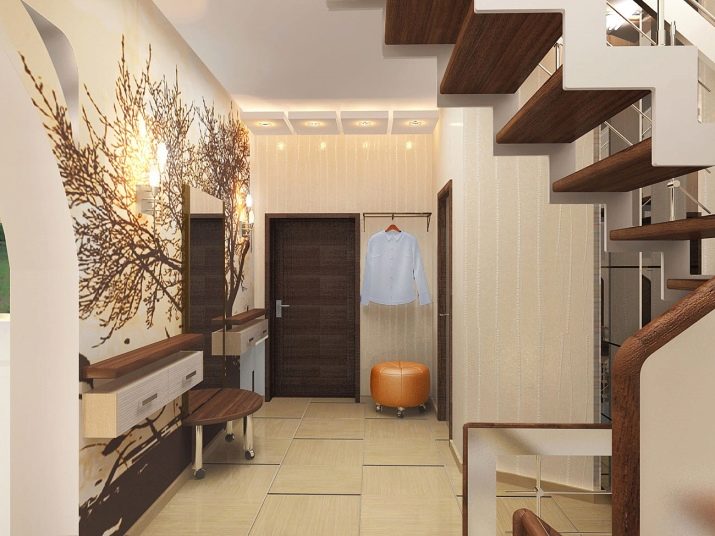
With frescoes
Frescoes are most often used in light and fairly spacious rooms. Such an original design element fits perfectly into the classic interior.
Summing up, we can say that when doing repairs in the corridor and decorating the walls in this room, you can use both porcelain stoneware, frescoes or panels, and the most ordinary wallpaper. The main thing is not the choice of material, but how it is combined with the finishing of the floor, ceiling, the color of furniture and decorative details.

For information on how to decorate the walls with laminate, see the video below.








